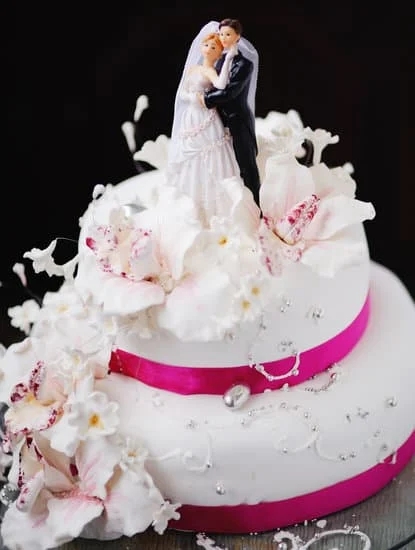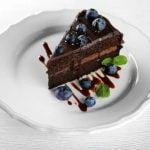Are you looking to elevate your cake decorating skills? Understanding how to use a piping bag is essential for creating beautifully decorated cakes. A piping bag allows for precise and intricate designs, making it a versatile tool for both beginner and experienced bakers alike. Whether you want to create elegant swirls, intricate flowers, or personalized messages on your cakes, mastering the art of using a piping bag is key.
Using a piping bag to decorate cakes opens up a world of creative possibilities. From simple designs to more elaborate patterns, the piping bag is a baker’s best friend when it comes to adding that perfect finishing touch to any cake. In this article, we will delve into the various aspects of using a piping bag effectively, from choosing the right type of bag to mastering different techniques for stunning cake decorations.
Before delving into the different types of piping bags and tips, it’s important to understand the fundamentals of using this essential tool for cake decorating. Properly preparing the piping bag, selecting the right tip for your design, and learning how to hold and control the bag are all crucial steps in achieving professional-looking decorations on your cakes. With some practice and patience, you can soon be creating beautiful cakes that will impress family and friends alike.
Types of Piping Bags
When it comes to decorating cakes with a piping bag, one of the first decisions you’ll need to make is whether to use disposable or reusable piping bags. Disposable piping bags are convenient because they require no cleaning – simply use them once and throw them away. They are particularly useful for beginners or occasional bakers who may not want to deal with cleanup.
On the other hand, reusable piping bags are more eco-friendly and cost-effective in the long run. They can be washed and reused multiple times, making them a great choice for frequent bakers or professionals.
Whether you choose disposable or reusable piping bags, it’s essential to consider the size and material of the bag. Piping bags come in various sizes, so selecting one that feels comfortable in your hand and suits the amount of frosting you typically use is key. Additionally, piping bags can be made of plastic, silicone, or canvas.
Plastic piping bags are inexpensive and easy to handle but can be less durable than their silicone or canvas counterparts. Silicone piping bags are flexible and easy to clean, while canvas bags offer a more traditional feel and can be washed like regular fabric.
Finally, when using either disposable or reusable piping bags, it’s crucial to ensure that they are properly sealed to prevent any frosting from leaking out while decorating your cake. This will help you maintain control over your design and create clean lines and shapes on your cake.
With the right type of piping bag suited to your needs and preferences, you’ll be well on your way to mastering how to use a piping bag to decorate cakes like a pro.
| Types of Piping Bags | Features |
|---|---|
| Disposable Piping Bags | Convenient for one-time use; no cleaning required |
| Reusable Piping Bags | Eco-friendly; cost-effective for long-term use |
| Piping Bag Material | Plastic: inexpensive but less durable; Silicone: flexible and easy to clean; Canvas: traditional feel, washable like fabric |
Choosing the Right Piping Tip for Your Design
When it comes to decorating cakes using a piping bag, choosing the right piping tip for your design is crucial. The piping tip you select will determine the shape and size of the decorations you create on your cake. There are numerous types of piping tips available in various shapes and sizes, each offering different design possibilities.
Types of Piping Tips
There are a wide variety of piping tips available, ranging from round tips for creating borders and writing to star tips for making rosettes and shells. Petal tips are ideal for creating flowers, while leaf tips can be used to add foliage to your designs. Additionally, specialty tips like ruffle tips and basket weave tips offer unique textures and patterns for more intricate decorations.
Matching Tip to Design
When selecting a piping tip for your cake design, consider the overall look you want to achieve. If you’re aiming for a simple and elegant design, a round tip may be suitable for creating smooth borders or writing messages. For a more elaborate look, star tips can be used to pipe intricate swirls or stars. Experiment with different piping tips to see which ones work best for the specific design you have in mind.
Experimentation and Creativity
Don’t be afraid to mix and match different piping tips to create unique textures and designs on your cake. Play around with varying pressure on the piping bag to control the thickness of your decorations.
By experimenting with different combinations of piping tips and techniques, you can unleash your creativity and take your cake decorating skills to the next level. Practice using different piping tips on a spare piece of parchment paper before decorating your cake to ensure precision in your design execution.
Preparing the Piping Bag
Frosting a cake with a piping bag is a skill that can take your cake decorating to the next level. To begin, it is crucial to properly prepare your piping bag by inserting the piping tip and filling it with frosting. Start by selecting the appropriate piping tip for the design you want to create. There are various types of tips that can help you achieve different effects such as writing, borders, flowers, and more.
Once you have chosen your piping tip, trim the end of the piping bag to fit the tip snugly. Insert the piping tip into the end of the bag and push it down until it is secure.
Make sure there are no gaps between the tip and the opening of the bag to prevent frosting from leaking out while decorating your cake. A good way to test if your tip is secured properly is by gently squeezing some frosting through it before you start decorating.
When filling your piping bag with frosting, remember not to overfill it as this can make it difficult to control and may cause frosting to spill out uncontrollably. Spoon or scoop your desired frosting into the bag up to about two-thirds full.
Twist or fold over the top of the bag to close it securely, pushing any excess air out as you go. With your piping bag now ready for use, you can practice different techniques on a spare plate or surface before decorating your actual cake.
| Tips | For Preparing Piping Bag |
|---|---|
| Choose appropriate tip | Trim end & insert securely |
| Avoid overfilling | Practice on a plate first |
Techniques for Holding and Using the Piping Bag
Proper Grip and Pressure
When it comes to using a piping bag to decorate cakes, the way you hold and apply pressure to the bag can make a significant difference in the outcome of your designs. The key is to grip the top of the bag firmly with one hand while using your other hand to guide and control the flow of frosting. By applying even pressure with steady hands, you can create smooth and consistent lines or swirls on your cakes.
Angle and Distance
Another important aspect of using a piping bag effectively is mastering the right angle and distance between the tip of the bag and the cake surface. Experiment with different angles to see how it affects the shape and thickness of your designs. Additionally, practice varying distances from the cake to achieve different effects – closer for more precise details and farther away for larger patterns or borders.
Practice Different Techniques
To enhance your cake decorating skills with a piping bag, it’s essential to practice various techniques such as creating rosettes, writing messages, forming petals for flowers, or making intricate patterns like lacework. Start by practicing on a flat surface before moving on to decorating actual cakes.
Remember that patience is key when learning new piping techniques – don’t get discouraged if your first attempts are not perfect. With time and practice, you will become more confident in using a piping bag for cake decoration.
Practice Makes Perfect
Mastering different piping techniques can truly elevate your cake decorating skills and take your creations to the next level. With a little practice and patience, you can create beautiful designs that will impress your friends and family. Here are some tips to help you improve your piping skills:
- Start with basic shapes: Begin by practicing with simple shapes like lines, dots, swirls, and rosettes. This will help you get comfortable with using the piping bag and develop a steady hand.
- Experiment with pressure: The amount of pressure you apply to the piping bag will affect the thickness and texture of your designs. Practice varying the pressure to create different effects on your cakes.
- Try different angles: Changing the angle at which you hold the piping bag can also create unique designs. Experiment with holding the bag straight up, at a 45-degree angle, or even upside down to see how it affects your decorations.
Once you feel more confident with these basic techniques, you can move on to more advanced piping skills like creating intricate flowers, detailed borders, and elegant lettering. Remember that practice is key when it comes to mastering piping techniques, so don’t be afraid to make mistakes along the way.
Common Mistakes to Avoid When Using a Piping Bag
When learning how to use a piping bag to decorate cakes, there are some common mistakes that beginners often make. By being aware of these pitfalls, you can avoid them and create flawless decorations every time:
- Not securing the piping tip properly: Make sure the piping tip is securely attached to the bag before filling it with frosting. Otherwise, you may end up with frosting leaking out or the tip coming off while decorating.
- Using too much frosting at once: Overfilling the piping bag can lead to messy designs and uneven decorations. Start by adding small amounts of frosting at a time and refill as needed during decorating.
- Rushing through designs: Take your time when piping decorations onto a cake. Rushing can result in sloppy work and uneven lines. Practice patience and focus on each movement for clean and precise designs.
By practicing regularly, paying attention to technique, and avoiding common mistakes, you’ll soon become proficient in using a piping bag for cake decoration. Keep experimenting with different designs and don’t be afraid to get creative.
Common Mistakes to Avoid When Using a Piping Bag
When using a piping bag to decorate cakes, it is important to be aware of common mistakes that can happen while piping frosting or icing onto your baked creations. Avoiding these errors will not only make your cakes look more professional but also help you feel more confident in your decorating skills. Here are some common mistakes to avoid when using a piping bag:
- Incorrect Filling Technique: One of the most common mistakes beginners make when using a piping bag is not filling it correctly. Make sure to fold the top of the bag over your hand and fill it only halfway with frosting or icing. This will prevent air bubbles from forming and ensure a smooth flow of frosting while decorating.
- Inconsistent Piping Pressure: Maintaining consistent pressure on the piping bag is key to achieving even and steady lines or designs on your cake. Practice squeezing the bag with steady pressure to control the flow of frosting and create uniform decorations.
- Unstable Holding Position: Another mistake to avoid is holding the piping bag at the wrong angle or in an unstable position. Hold the bag perpendicular to the surface of the cake with one hand supporting near the base for better control. This will help you achieve more precise decorations.
Avoiding these common mistakes will help you improve your cake decorating skills and create beautifully decorated desserts that are sure to impress your friends and family.
- Remember these tips as you practice how to use a piping bag to decorate cakes:
- Keep practicing different designs and techniques to improve your skills.
- Experiment with different piping tips and frosting consistencies to see what works best for you.
Advanced Piping Techniques
When it comes to cake decorating, the use of a piping bag opens up a world of possibilities for creating intricate designs and adding personal touches to your baked creations. Advanced piping techniques such as roses, swirls, and other decorative elements can take your cakes from ordinary to extraordinary. In this section, we will delve into the step-by-step process of mastering these advanced piping techniques to elevate your cake decorating skills.
One popular advanced piping technique is creating beautiful buttercream roses on cakes. To achieve this elegant design, start by using a rose petal piping tip (usually Wilton tip #104 or #127) and prepare your piping bag with the desired color of buttercream frosting. Begin by piping a small cone-shaped mound in the center of where you want your rose to be.
Next, pipe overlapping petals around the center mound in a circular motion, gradually building up the layers to create a blooming rose effect. Practice is key when it comes to perfecting the art of piping buttercream roses, so don’t be discouraged if your first few attempts don’t turn out as expected.
Another classic piping technique that can add a touch of whimsy and elegance to your cakes is creating delicate swirls and spirals with your piping bag. For this technique, choose a round or star-shaped piping tip depending on the desired effect you want to achieve. Hold the piping bag at a 45-degree angle above the surface of the cake and apply steady pressure while guiding the tip in a swirling motion.
Experiment with different pressure levels and speed to create variations in size and shape for unique decorative patterns. With practice and patience, you’ll soon be able to effortlessly create stunning swirls and spirals that will impress any dessert lover.
In addition to roses and swirls, there are countless other advanced piping techniques that you can explore to enhance your cake decorating skills. From basketweave designs and lace patterns to intricate filigree details, mastering these techniques requires patience, practice, and attention to detail.
By honing your skills with different piping tips, experimenting with various frosting consistencies, and investing time in practicing different designs, you’ll be well on your way to creating show-stopping cakes that are not only delicious but visually stunning as well.
Cleaning and Maintaining Your Piping Bag for Longevity
When it comes to cake decorating, using a piping bag is essential for creating beautiful designs and intricate details on your cakes. However, it is equally important to properly clean and maintain your piping bag to ensure its longevity and effectiveness. Taking care of your piping bag will not only extend its lifespan but also guarantee that your decorations are neat and precise every time you use it.
To clean your piping bag effectively, start by removing any excess frosting or icing from the bag after each use. You can do this by turning the bag inside out and rinsing it with warm water. Avoid using hot water, as it can melt the frosting residue and make cleaning more challenging. Gently scrub the interior of the bag with a small brush or sponge to remove any stubborn residue.
After cleaning, make sure to thoroughly dry the piping bag before storing it away. Hang the bag upside down over a clean dish rack or prop it open with a stand to air dry completely. Avoid folding or crumpling the bag while drying, as this can cause creases that may affect the flow of frosting later on. Once dry, store your piping bags in a cool, dry place away from direct sunlight to prevent any mold or mildew growth.
Conclusion
In conclusion, mastering the art of cake decorating with a piping bag can truly elevate your skills and take your creations to the next level. By understanding the importance of using a piping bag, choosing the right tools, practicing different techniques, and avoiding common mistakes, you can create beautiful designs on your cakes that will impress friends, family, and clients alike.
Remember that there are different types of piping bags to choose from – disposable for convenience or reusable for sustainability. Selecting the right piping tip for your desired design is crucial, so take the time to experiment with different shapes and sizes to achieve the perfect look. Properly preparing and filling your piping bag with frosting is key to ensuring seamless decorating.
As you continue to practice and hone your skills with a piping bag, you will soon be able to master advanced techniques such as creating intricate roses, elegant swirls, and other detailed designs. Don’t forget to clean and maintain your piping bag regularly to prolong its longevity and ensure optimal performance.
With dedication and patience, you can become a pro at using a piping bag to decorate cakes in no time. So go ahead, unleash your creativity and let your cakes stand out with beautiful decorations.
Frequently Asked Questions
How Do You Decorate a Cake With Piping Bag and Tips?
Decorating a cake with a piping bag and tips involves filling the bag with frosting, holding it correctly at a 45-degree angle, and applying pressure to create designs. Practice is key to mastering different techniques like borders, flowers, and writing.
How Do You Put Frosting in a Piping Bag?
To put frosting in a piping bag, start by fitting your desired tip into the coupler before placing it in the bag. Spoon or scoop the frosting into the bag, making sure not to overfill it. Twist the end closed and apply pressure when decorating.
How Do You Attach a Tip to a Piping Bag?
Attaching a tip to a piping bag requires inserting the desired tip into the coupler base securely before twisting it onto the piping bag opening. Make sure it is tightened properly to prevent any frosting from leaking out while decorating your cake.

Welcome to our cake decorating blog! My name is Destiny Flores, and I am the proud owner of a cake decorating business named Cake Karma. Our mission is to provide delicious, beautiful cakes for all occasions. We specialize in creating custom cakes that are tailored specifically to each customer’s individual needs and tastes.





